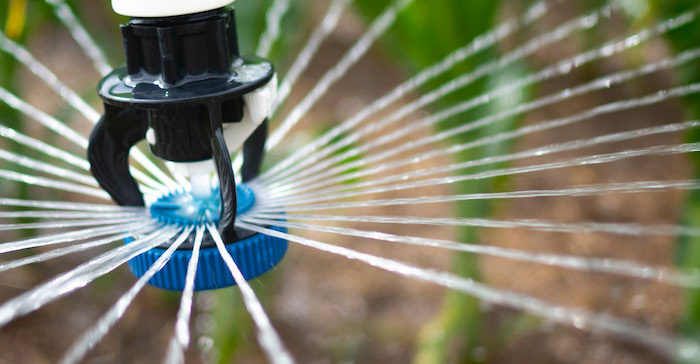By Steve Melvin, Aaron Nygren and Troy Ingram
Scheduling the last few irrigations of the season deserves more of your management time than earlier irrigations because one must not only focus on keeping the crop wet enough to produce optimal yields, but also on using up enough of the stored soil water to lower the level to 40% of plant available water in the top four feet.
This level will give about 2.4 inches of water storage room in sandy soils and about 5.5 inches in silt loam soils. Unfortunately, many irrigators leave the soil fairly wet with little to no storage room according to a recent study.
Each year, the Upper Big Blue NRD requires each farmer in six zones across the district that have high nitrates in the groundwater to use soil water monitoring equipment in at least one irrigated field and to turn the data into the NRD at the end of the year.
The study focused on the fields that used a Watermark system, which includes three sensors placed at different depths to represent the root zone of corn and soybeans and a data logger to automatically record the data.
University of Nebraska irrigation scheduling recommendations encourage irrigators to allow the crop to continue using more and more of the stored soil water starting in August and continuing into September when the crop matures.

Table 1. Percent of fields that had a lower soil water content on Sept. 15 than in August.
Some years, a significant rain can cause the soil to be wetter in September, but it is usually due to applying more irrigation water than needed.
The data does not give any insight into why so many fields get wetter, but it could be because the irrigation routine is set in July when the plants are in top condition transpiring at their peak level, the days are long, and the temperatures are high.
Then as we move later into the summer as the daylight shortens and the temperatures get lower, we keep irrigating like we were in July even though crop water use for corn has gone from an average of 0.30 inches/day at silking to 0.18 inches/day at full dent. Other crops have a similar dramatic drop in crop water use, as well.
The reason for the recommendation is to save money on pumping costs, leave room to store the offseason precipitation, and reduce the potential for leaching nutrients like nitrate nitrogen deeper into the profile.
For most of Nebraska, adequate precipitation will be received from October through May to refill the soil profile on irrigated fields. In addition, leaving the soil dryer will help reduce harvest delays because of mud in wetter falls.
So just how much water do we need to finish out the growing season? Table 2 gives you a good idea of water is needed based on crop growth stage.






